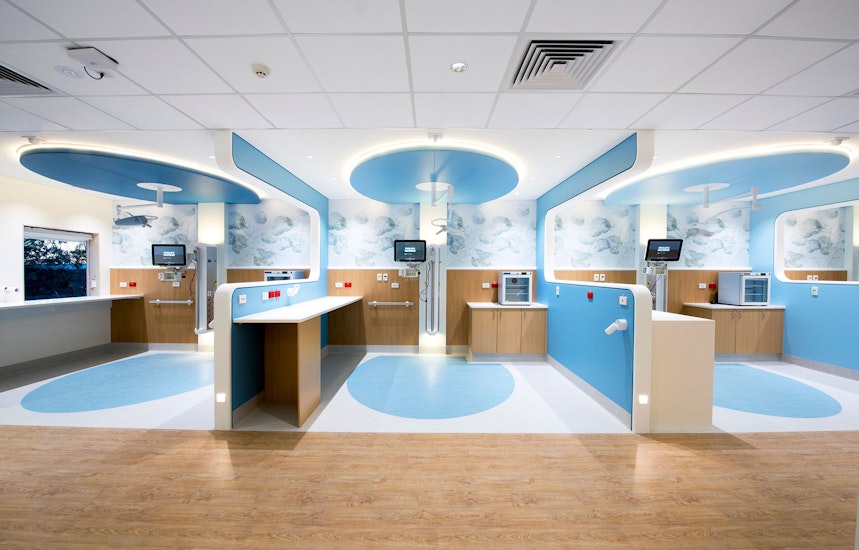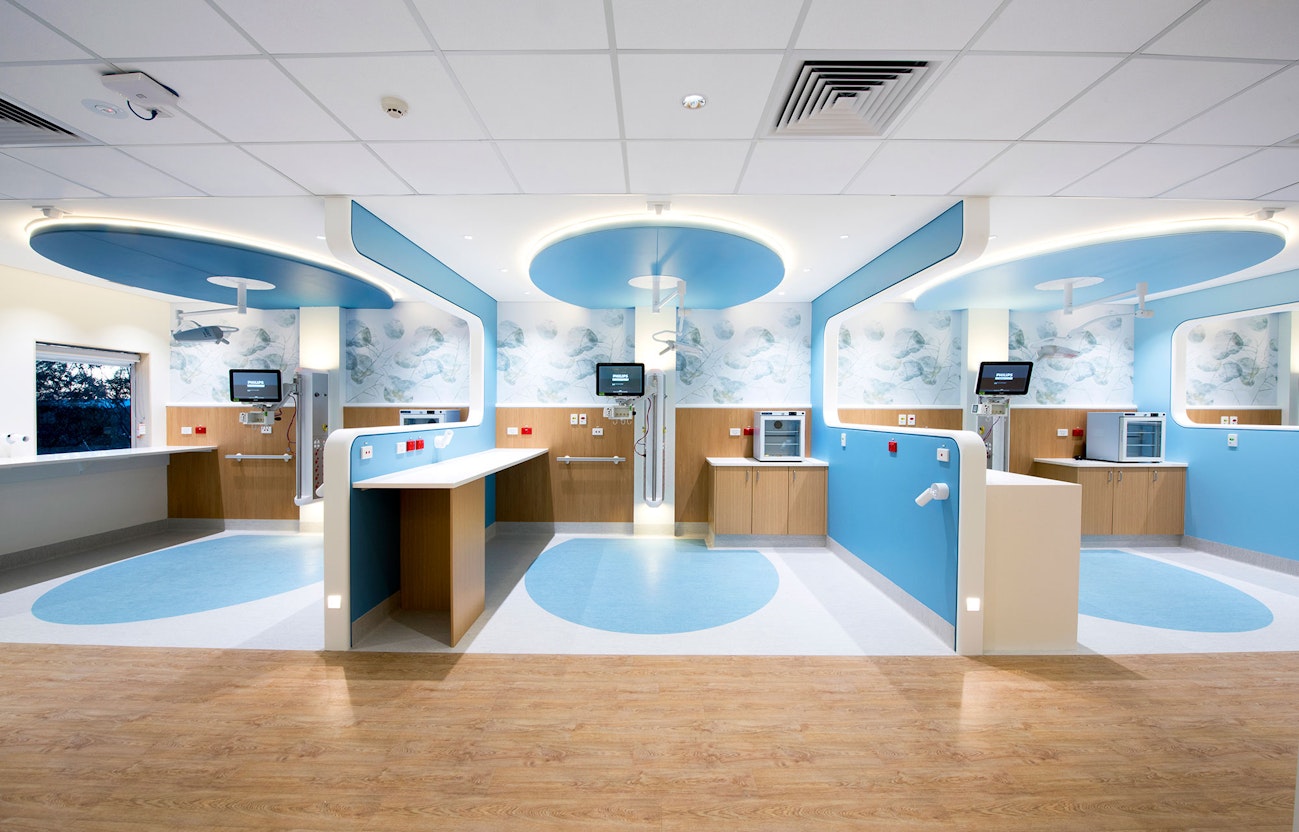


SHEDDING LIGHT ON NEONATAL CARE: HOW LIGHTING ENVIRONMENTS IMPACT PREMATURE INFANTS' HEALTH AND DEVELOPMENT
12 Oct 2023
Rachel Thomson
Senior Lighting Designer
Neonatal Care Project Asa Moum (Moum Design) & Moa Berg (WSP) A light/dark cycle in the NICU accelerates body weight gain and shortens time to discharge in perterm infants Dr Samual Vasquez-Ruiz & Dr Jose Maya The NICU Lighted Environment Dr Mark Rea & Mariana Figueiro (FIES) The effects of cycled versus noncycled lighting on growth and development in preterm infants Cynthia Miller Discovery of the Photosensitive Retinal Ganlion Cell Mariana Figueiro (FIES) Recommendations on neonatal light environment French Neonatal Society Effects of light exposure at night during development Laura Fonken & Randy Nelson Lighting for today’s neonatal intensive care unit Patricia Rizzo & Dr Mark Rea
If you’ve ever experienced jetlag, pulled an all-nighter or tried to sleep with a blocked nose then you know your sleep and wake cycle can easily be thrown off and interrupted with unfavourable side effects. For some, that imbalance of difficulty sleeping at night, difficulty waking in the morning or sudden fatigue at noon is constant. Because of this, scientists are starting to uncover the links between our circadian clocks, lighting environments and health.
Brown University scientist David Berson, alongside Samer Hattar and colleagues, made a breakthrough discovery in 2002 by uncovering the intrinsically photosensitive retinal ganglion cell (ipRGC) in the eye which is now known to be the main conduit of light signals from the retina to the brain.
However, with this discovery of the ipRGC it was still unknown how the retina converts light signals into neural signals for the circadian system. That was until Dr Satchidananda Panda has dedicated his work to exploring the genes, molecules and cells that keep the whole body on the same circadian clock. In his work, he uncovered a section of the hypothalamus (a structure deep in your brain) called the suprachiasmatic nucleus (SCN) which lies at the centre of the body’s master clock and the link that exists between the SCN and the ipRGC. The SCN gets input directly from the ipRGC, keeping the rest of the body on schedule setting the time to go to sleep and wake up every day.
This discovery of the ipRGC resulted in a paradigm shift in science as well as a shift in how lighting is measured, manufactured, specified, and applied. However, the application of this knowledge into lighting practice is still largely undeveloped. Lighting designers, manufacturers, and users embrace the idea that lighting isn’t just for vision, but lighting professionals are still struggling with how to implement the knowledge.
The science that exists behind the development of the circadian system in preterm and full-term infants is even less revealed. Although several researchers have conducted studies on the NICU lighted environment, the existing disagreement among the findings and the recommendations of neonatal experts limit the distribution of the results of these studies to guide neonatal clinical practice. Further research has been needed to examine the long-term effects of lighting on infants and how these may translate into adulthood.
Evidence suggests that the environment experienced by a newborn will impact and shape its development, which will have future consequences at the levels of circadian system function, circadian behaviour, physiology and potentially long-term health and welfare. The below is a summary of published scientific studies collated by EPA on the effects of hospital lighting on neonatal care, the roles of postnatal light environments and recommendations for how lighting should operate in these lighted environments:
The “NICU Lighted Environment” is a published research article authored by Mark Rea and Mariana Figueiro from the Lighting Research Centre. Their article explains how engineering recommendations for hospital ward lighting rose from 200-300 lux in 1947 to 1000 lux in 1970 which requires a re-evaluation of lighting design practices in modern NICUs.
Cynthia Miller from the University of Notre Dame in Canada published a research article on “The effects of cycled versus noncycled lighting on growth and development in preterm infants”. In this article the terms “cycled” and “noncycled” light refer to the design and implementation of different lighting scenes (adjusting dimming levels) in comparison with a single set lighting scene within the NICU environment. In this study, 41 preterm infants were provided with either cycled or noncycled lighting during a lengthy hospital stay. The study examined the relationship of lighting in conjunction with infant birth status (birth weight etc.) to multiple aspects of infant development.
The study found that compared to infants in noncycled lighting conditions, infants assigned to the cycled lighting condition had a greater rate of weight gain, were able to be fed orally sooner, spent fewer days on the ventilator and on phototherapy, and displayed enhanced motor coordination. This cycled light has proven to improve growth and has shown that bright constant light levels in the NICU may have negative effects on the growth and development of preterm infants.
Dr Samuel Vasquez and Dr Jose Maya from the Neonatology Department in Hospital Juarez de Mexico conducted a research study and co-authored an article with their findings, “A light/dark cycle in the NICU accelerates body weight gain and shortens time to discharge in preterm infants”. In this study, 38 infants were split into a constant light and a light/dark cycle for analysis. Infants who took part in the constant light cycle were exposed to the daily and constant lighting conditions of the NICU, which involved background lighting levels of 260 lux plus. Infants who took part in the light/dark cycle had their lighting levels reduced to 27 lux at the level of the eyes from 7pm to 7am and were exposed to the daily lighting conditions of the NICU from 7am to 7pm. It was found that with infants maintained on a light/dark cycle compared with a constant light cycle gained weight faster and therefore had a reduced hospital stay. It was also recorded that infants under the light/dark cycles exhibited improved oxygen saturation, developed a daily melatonin rhythm (increased time spent sleeping), decreased time spent feeding, had a better tolerance to milk, improved physiological development and decreased risk or exposure to acquiring diseased while in hospital (less time in hospital). If that list wasn’t long enough, you could add the direct and indirect economic costs in the reduction of health services required with shorter hospital stays.
Laura Fonken from the University of Colorado and Randy Nelson from the Ohio State University co-authored a research article, “Effects of light exposure at night during development”. Their article states, “Early life experiences can profoundly affect the developing brain, influencing adult behaviour, health, and disease; thus, the immature circadian system may be particularly sensitive to circadian disruption”. In summary, because the circadian system is immature at birth, early lighting environments can profoundly affect the maturation of the suprachiasmatic nucleus (SCN) in the brain and its outputs. The consequences of early life circadian disruption can persist into adulthood influencing physiological and behavioural functions and increases depressive-like responses that are regulated by the circadian system. These findings show that the circadian system is not limited to just regulating our sleep/wake cycle but regulating much more over extended periods of time.
Claire Zores-Koenig, Pierre Kuhn and Laurence Caeymaex form the Group of Reflection and Evaluation of the Environment of Newborns study group of the French Neonatal Society. Together they have authored an article on “Recommendations on neonatal light environment”. In their article they recommend that artificial lighting in neonatal wards should not exceed 1000 lux, and all changes in lighting levels should be gradual as infants should not be exposed to continuous high lighting levels regardless of their term and postnatal age. For infants of <32 weeks of postmenstrual age, light protection should be used to shield their eyes from the surrounding artificial lighting. This is not only recommended for a cycled lighting environment but also necessary when medical staff are performing specific care procedures and require higher lighting levels. This light protection or light shielding was a method also used in the light/dark study lead by Dr Samuel Vasquez, where an acrylic helmet covered with blue surgical drapes was placed above the head of each infant.
Lastly, Lighting Designers Asa Moum from Moum Design and Moa Berg from WSP Finland collaborated on an EU funded project in cooperation with Region Skane and the Neonatal Care Unit at Helsingborg Hospital. The purpose of the project was to design and create healthy lighting environments for premature babies, for staff of the neonatal care unit and for parents. The process of the project involved a hands-on workshop in a light lab at Lund Technical University where with research and design work, five recommended light environments were established. The purpose of these light environments was to protect the infants from excessive constant light whilst still ensuring that staff could work safely. These five recommended light environments are: general light, night light, focus light, precision light and ambient light.
Firstly, and importantly to note with these light environments is the LED light panels in the ceiling were designed in a horseshoe pattern, so no direct lighting was sitting above the incubators. As previously identified in Dr Samuel Vasquez’s study of the light/dark environment, it was known that infants of 28 weeks are mature enough to be exposed to very low light levels, a maximum of 27 lux. In this study, it was designed so that only 27 lux reached the inside of the incubator, whilst there were higher lighting levels within the rest of the room. A summary of the 5 light environments below:
General Light: Colour temperature set to 2700K, maximum of 27 lux within incubator, 50 lux within room.
Night Light: Staff are monitoring the infants from the reception area. Colour temperature set to 2700K, 2-3 lux within incubator, 5 lux within room. Corridor lighting is dimmed to lower light levels to minimise the time it would take for the eye to adjust to different lighting conditions during nighttime.
Focus Light: Intended for observations and light examinations conducted by medical staff. Colour temperature set to 3000K, maximum of 162 lux within incubator, 300 lux within room.
Precision Light: For staff performing precision work and treatments. Colour temperature set to 4000K, maximum of 279 lux within incubator, 519 lux within room. In this light environment it is recommended the infant’s eyes should be protected at all times.
Ambient Light: Used to create a calming atmosphere in the room to encourage parents and infants to bond. Colour temperature set to 2700K, maximum of 20 lux within incubator, 45 lux within room.
One of the further most interesting developments of this study was the introduction of “Light Showers” for nighttime medical staff. This is so staff can spend up to 15 minutes in a light shower room for a boost of blue spectrum light, provided at high intensity which is known to suppress the sleep hormone melatonin. As the above lighting environments are aimed at reducing light levels and blue enriched light sources for infants, this creates a conflicting environment for shift workers and night staff to perform their tasks in. The purpose of this light shower is to increase focus and productivity by suppressing melatonin levels. By improving overall health and increasing productivity among nurse shift workers, the neonatal care unit will become a safer and healthier environment.
These findings emphasize the critical effects that the newborn ICU environment can have on the development of premature infants and how these can translate into adulthood. In Australia, it is becoming more common to see NICU wards with in-direct only lighting, which is a great start, however it is crucial the above research is implemented in NICU wards across the world.